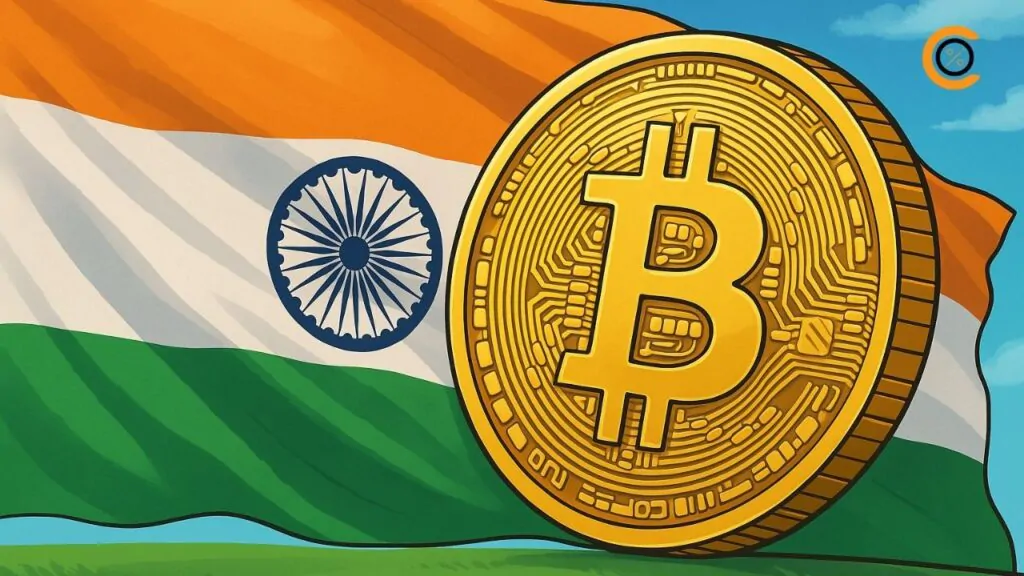- •The Reserve Bank of India says crypto rules risk legitimizing sector, warning regulation could embed digital assets into the financial system.
- •India has avoided full regulation, instead imposing a 30% tax on crypto gains, FIU registration for exchanges, and AML compliance requirements.
- •Despite policy caution, India leads globally in grassroots crypto adoption, creating a gap between regulatory restraint and market activity.
The Reserve Bank of India says crypto rules risk legitimizing sector, a stance that is shaping the country’s cautious approach to digital assets. While many countries are moving toward clearer regulatory frameworks, India continues to tread carefully, weighing the risks of financial instability against growing adoption. Officials argue that full regulation could make crypto appear more accepted within the financial system, a development they see as dangerous. At the same time, India’s policymakers know that bans have limits, since peer-to-peer trading and decentralized exchanges remain outside traditional oversight. This has left the country walking a narrow path between caution and practicality.
RBI’s Warning on Legitimization
According to documents cited by Reuters and reported across multiple outlets, the Reserve Bank of India (RBI) has warned that regulating cryptocurrencies would effectively grant them legitimacy. The concern is that once legitimized, crypto could become more deeply integrated into the financial system, raising the possibility of systemic risks.
The RBI has argued that regulation would not be enough to contain speculative activity, peer-to-peer transfers, or the rapid growth of decentralized exchanges. It has also stressed that outright bans, while addressing some dangers, cannot stop such activity entirely. For the central bank, the challenge lies in acknowledging crypto’s presence without embedding it further into the economy.
India’s Limited Approach
India has not implemented comprehensive crypto regulation. Instead, it has chosen partial oversight. A 30% tax on digital asset gains is already in place, and foreign exchanges must register locally with the Financial Intelligence Unit (FIU). Those failing to do so, including Binance, KuCoin, and Kraken in the past, have faced temporary blocks.
Some exchanges have since returned by obtaining proper approval. Binance and KuCoin, for example, resumed operations in 2024 after meeting registration requirements. Locally operating crypto businesses are also required to follow Anti-Money Laundering rules. These measures stop short of providing a full legal framework but reflect the government’s effort to maintain control without fully legitimizing the sector.
Stablecoins Under Scrutiny
One area of particular concern for Indian regulators is the rise of stablecoins. The RBI has warned that widespread use of dollar-pegged stablecoins could weaken the Unified Payments Interface (UPI), India’s flagship digital payments system. Although stablecoins are marketed as tools for price stability, they remain vulnerable to liquidity pressures and market shocks.
Officials fear that large-scale adoption of stablecoins could undermine trust in domestic systems, creating risks for financial stability. This concern comes as other countries, including the U.S. and Japan, are moving ahead with stablecoin regulation, while India prefers to watch global developments before making commitments.
Global Context and Policy Delays
India’s caution contrasts with trends elsewhere. The United States recently advanced stablecoin legislation with the GENIUS Act, while Japan and Australia are crafting frameworks of their own. China continues its ban on crypto trading but is exploring the use of state-backed digital currencies.
India, by comparison, shelved its crypto bill proposed in 2021 and has since delayed further steps, including a discussion paper in 2024. The government’s strategy has been to wait and observe international approaches before moving forward. This hesitation highlights the balance between addressing risks and not wanting to fall behind global shifts in regulation.
Also read: Indian Court Sentences 14 to Life in Bitcoin Extortion Case Trial
Adoption Outpaces Policy
Despite the central bank’s skepticism, crypto adoption in India continues to grow. The 2025 Global Crypto Adoption Index by Chainalysis ranked India at the top worldwide, reflecting strong grassroots participation in both centralized and decentralized services.
Reports show that adoption spans institutional and retail users, making India one of the most active crypto markets by volume. At the same time, officials acknowledge a paradox: while metrics show strong engagement, actual usage remains uneven, with speculation dominating much of the activity. This mismatch underlines the gap between crypto’s popularity among investors and the government’s reluctance to endorse it.
India’s Crossroads on Crypto Regulation
The Reserve Bank of India says crypto rules risk legitimizing sector, a belief that continues to guide the government’s restrained approach. As adoption grows and international frameworks take shape, India faces a pivotal decision: maintain its cautious stance or move toward structured regulation. For now, the country remains at a crossroads, balancing strong domestic demand against the risks of legitimizing a sector still viewed with skepticism by its central bank.
- Cointelegraph – Reserve Bank of India says crypto rules risk legitimizing sector – (Sep 10, 2025)
- Coinpedia – Crypto Regulation in India 2025 and Tax Policy Explained – (Sep 2025)
- Chainalysis – The 2025 Global Crypto Adoption Index – (Sep, 2025)
- CoinCentral – India Delays Crypto Regulation Amid Concerns of Systemic Risks – (Sep 10, 2025)







